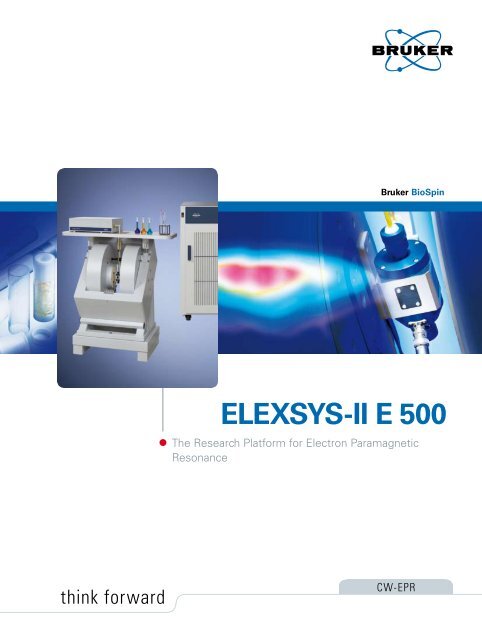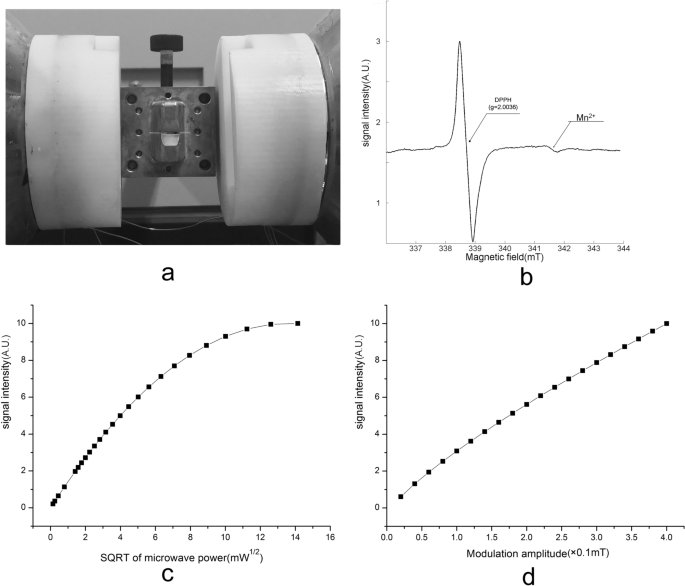
Song L, et al, Distance and dynamics determination by W-band DEER and W-band ST-EPR, Eur Biophys J. Kim, M, et al, Antibody mechanics on a membrane-bound HIV segment essential for GP41-targeted viral neutralization, Nature Struct.

Vileno, B, et al, Broad disorder and the allosteric mechanism of myosin II regulation by phosphorylation, P. Sun ZY, et al, Disruption of Helix-Capping Residues 671 and 674 Reveals a Role in HIV-1 Entry for a Specialized Hinge Segment of the Membrane Proximal External Region of gp41, J Mol Biol. Lumata, L., et al, Electron spin resonance studies of trityl OX063 at a concentration optimal for DNP, Phys. View the embedded image gallery online at:
Bruker epr cavity software#
The spectrometer is computer controlled by using software coded in LabVIEW.Ĭontinuous-wave Spectrophotometer from shimadzu websiteĪ commercial spectophotometer (Shimadzu UV1900i), which is interfaced with a PC, is used for routine spectrophotometry. Signals are digitized with a fast digital sampling oscilloscope. Light excitation of samples is provided by a pulsed-Nd-YAG laser,Īnd the photo-induced absorbance changes are followed on time-scales of 100 ns to milliseconds by using a continuous-wave measuring beam with photomultiplier tube detection. Different cryostats allow EPR and ENDOR experiments to be performed from 4 K to room temperature.Ī home designed and constructed transient optical spectrometer is used to perform time-resolved absorbance (300-700 nm) spectroscopy. All operations are controlled via GPIB/IEEE-488 PC-device interfaces by using Matlab software.Ĭontinuous-Wave Electron Paramagnetic Resonance SpectrometersĪ Bruker E500 is used to perform continuous-wave EPR and ENDOR at X-band (~9.4 GHz) and Q-band (~31 GHz). ESE experiments are typically performed at 6 K. Sample temperatures from <2 K to 295 K are maintained by a Janis cryostat. The detection bandwidth is ≤500 MHz and the pulse timing resolution is ≥1.6 ns. Broadband folded half wave resonators and loop gap resonators, and a modified Varian X-band cavity (TE) resonator are used to achieve different microwave frequencies and optimize different experiments. The pulsed-EPR spectrometer operates continuously over X-band (8.2-12.4 GHz) and Ku-band (12.4-18.0 GHz) microwave frequencies. These features allow the immediate implementation of current developments in the rapidly progressing field of pulsed-EPR spectroscopy, and allow us to tailor the experiments as necessary for different biological samples. A guiding principle in the design of the spectrometer was flexibility, both in terms of hardware and software. storage, measurement with cavity integrated nitrogen. Pulsed-EPR experiments, including electron spin echo-detected EPR (ESE-EPR), electron spin echo envelope modulation (ESEEM), electron spin echo electron-nuclear double resonance (ESE-ENDOR), Fourier-transform EPR (FT-EPR), and inversion and saturation recovery, are performed on a home designed and constructed pulsed-EPR spectrometer. Our bench-top ESR5000 EPR spectrometer is a compact high performance.

Instrumentation Pulsed-Electron Paramagnetic Resonance Spectrometer


 0 kommentar(er)
0 kommentar(er)
